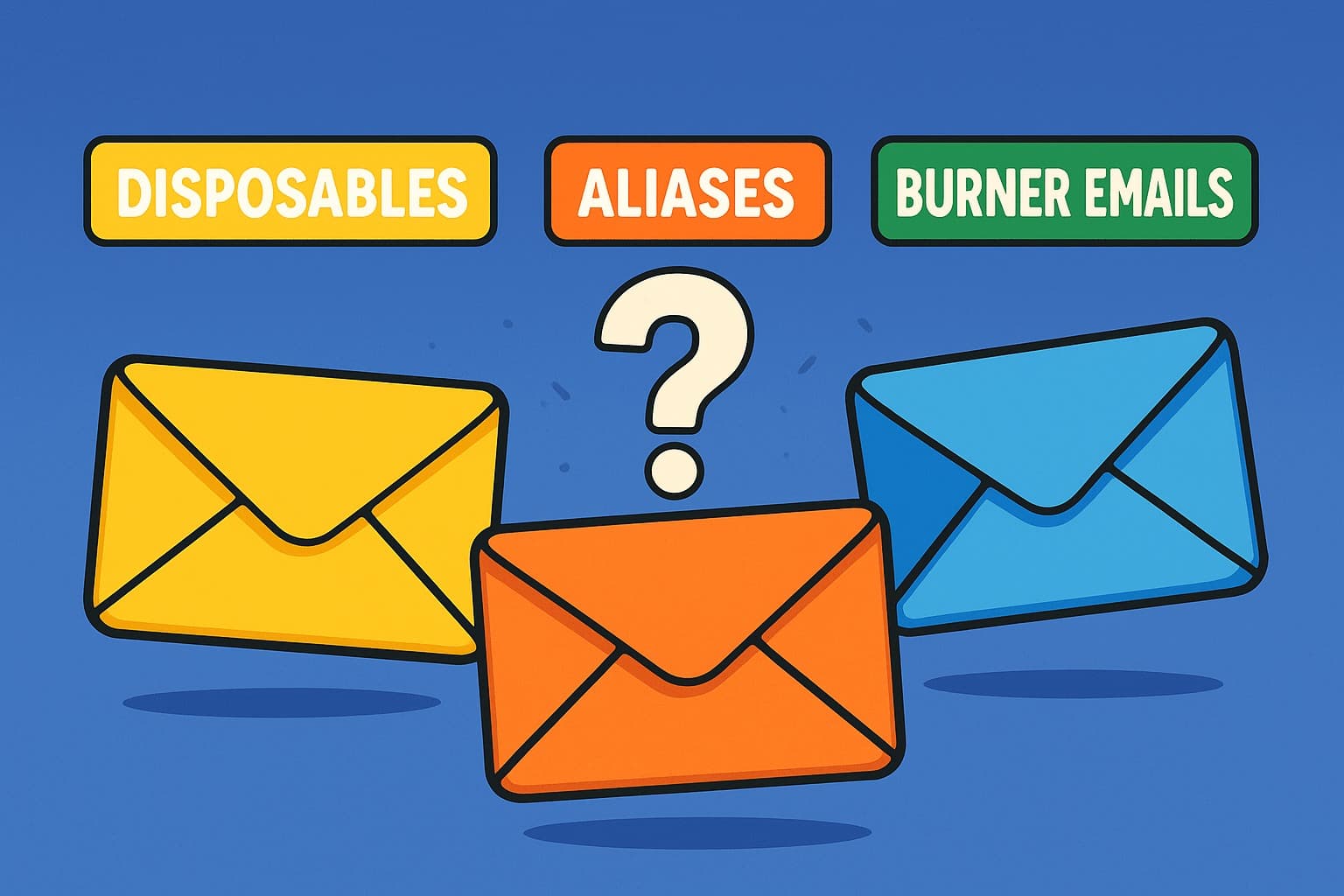Disposables, Aliases, or Burner Emails — Which One Should You Use in 2025?

If Your Inbox Feels Like an Uninvited Party
Everyone’s chasing the same solution — “a second email just for junk.”
But not all extra inboxes are created equal. In 2025, privacy isn’t just about hiding — it’s about control.
Let’s decode the three main players in email privacy: disposables, aliases, and burners.
🧩 The Three Kinds of “Extra” Emails
1. Disposable Emails — The One-Night Stand
Quick, throwaway inboxes like Temp-Mail, 10MinuteMail, or Guerrilla Mail. Perfect for:
- One-time downloads
- Verifying access to PDFs or coupons
- Avoiding instant spam
Pros: Instant, anonymous, zero setup
Cons: Temporary, no continuity, unreliable for multi-step registrations
2. Alias Emails — The Costume Change
An alias forwards emails to your main inbox (e.g., shopping@you.gmail.com). Great for:
- Categorizing incoming mail
- Keeping work and personal sign-ups distinct
- Tracking which sites leak your data
Pros: Convenient, replies still work, good for organization
Cons: Still connected to your real identity; metadata traceable
3. Burner Emails — The Secret Identity
Temporary but functional. Receive replies, forward selectively, and deactivate at will. Ideal for:
- AI tools, forums, or trials
- Freelance projects or dating apps
- Any service you might abandon later
Pros: Reversible anonymity, control, traceability
Cons: Requires minor setup
🧠 When to Use What (Real-World Matrix)
| Scenario | Disposable | Alias | Burner | | -------------------------- | ---------- | ----- | ------ | | Downloading a free eBook | ✅ | ❌ | ✅ | | Joining an online course | ❌ | ✅ | ✅ | | Testing a new AI tool | ✅ | ❌ | ✅ | | Managing freelance clients | ❌ | ✅ | ✅ | | Dating or event sign-ups | ❌ | ❌ | ✅ | | Subscribing to newsletters | ✅ | ✅ | ✅ | | Business registrations | ❌ | ✅ | ❌ |
Temporary access → Disposable
Organization without anonymity → Alias
Privacy + control → Burner
⚙️ The 2025 Privacy Reality Check
Even “anonymized” data can be re-identified. Many sites track email usage across platforms, building shadow profiles.
Burner emails break continuity — you change the key before the system can lock on.
💡 Smart Hybrid Strategy
Combine all three:
- Disposable: low-trust sites, freebies
- Alias: long-term newsletters, shopping
- Burner: accounts, payments, trials
Each layer isolates risk — if one leaks, your real address stays safe.
🔐 Why the Future Belongs to Burners
Email addresses are evolving into universal login IDs. Burner systems restore ephemerality — the ability to exist temporarily without becoming permanent data fodder.
🌍 Final Takeaway
In 2025, privacy is about choosing when to reveal yourself.
- Disposable emails → quick fixes
- Aliases → organization filters
- Burner emails → firewalls
Ask yourself: “Do I want a conversation, or just access?” Then pick the right tool and keep your digital identity yours.